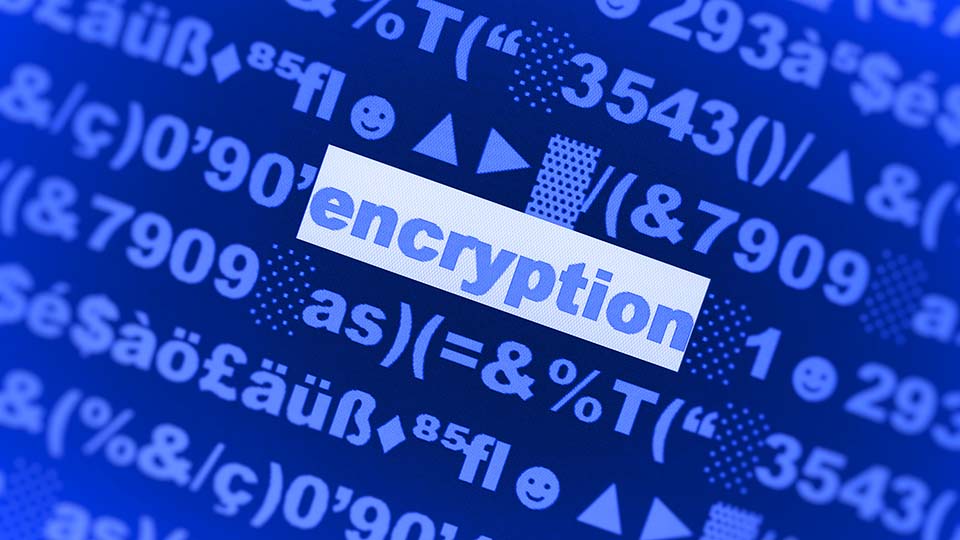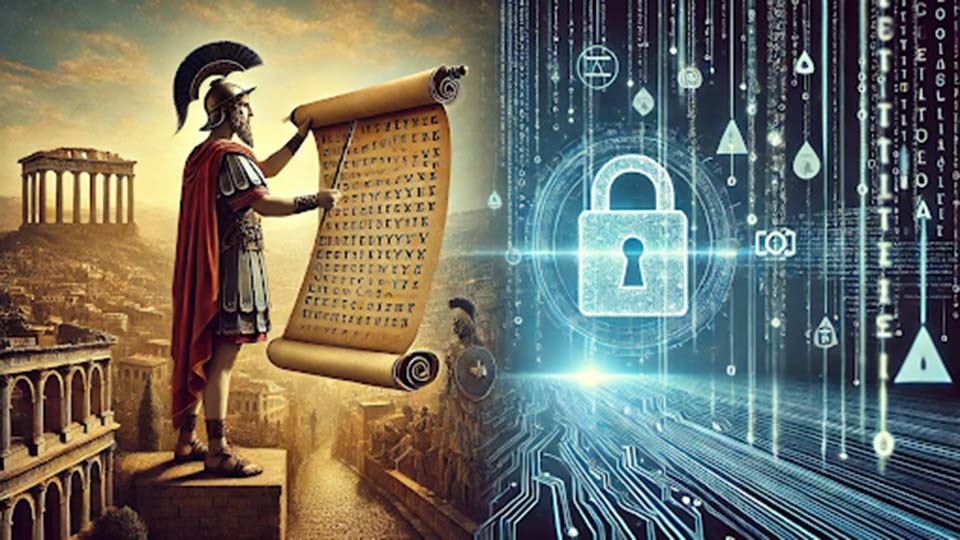
From Ancient Ciphers To Modern Protection
People have sought to protect sensitive information from prying eyes for centuries. In fact, one of the earliest recorded ciphers is often attributed to Julius Caesar. In it, letters in a message are shifted a fixed number of places (e.g., A becomes D, B becomes E, etc.) so that only someone with the secret key could understand the message. Similarly, the Romans used a cipher known as ROT-13 (where letters were shifted by 13 places in the alphabet) to keep their communications private.
Though easily deciphered now, the principle behind these ancient practices remains the same: protecting data by transforming it. This fundamental idea is at the heart of modern encryption, though the methods are far more sophisticated today.
Today, encryption is a critical safeguard for digital media. By locking down data with advanced encryption, media organizations add a powerful layer of defense against unauthorized access.

What Is Encryption?
Encryption is the process of converting readable data into an unreadable format using a mathematical algorithm and a secret key. In simpler terms, think of encrypting data like locking your information in a safe—only those with the right combination can unlock and read it.
This prevents unauthorized use of your data, ensuring that even if someone gains access to your drives or infiltrates your network, they can’t make sense of your files. Without the correct credentials, the encrypted data is just gibberish.

Unparalleled Security With AES-256 Encryption
While there are various modern encryption methods, AES-256 (Advanced Encryption Standard with a 256-bit key) stands out as the gold standard for securing data. When properly implemented, AES-256 encryption is effectively unbreakable with current technology.
To put its strength into perspective, a 256-bit key has an astronomical number of possible combinations. Trying to brute-force crack a system protected by AES-256 would take longer than the age of the universe with today’s computers. Additionally, AES-256 is considered resistant to quantum computing threats, ensuring long-term protection against future advancements in cryptographic attacks as the possibility of Q-Day draws closer.
What Is Q-Day?
Q-Day refers to a future point when quantum computers become powerful enough to break certain types of encryption—especially those used to securely exchange keys, such as RSA (Rivest–Shamir–Adleman) and ECC (Elliptic Curve Cryptography). These are known as asymmetric encryption methods.
AES-256, by contrast, is a symmetric encryption algorithm and is currently believed to be far more resistant to quantum attacks. It uses a single, shared secret key for both encryption and decryption and is highly efficient for securing large volumes of data. That’s why AES-256 remains a trusted standard for protecting sensitive information, even in a post-quantum world.

EVO’s Data Security Measures
For media teams handling confidential content—from film studios working on the next blockbuster in post-production to medical, financial, and government organizations, and beyond—EVO provides a secure solution.
The latest version of EVO offers AES-256 encryption options for both in-flight and at-rest data. This means your media files are protected not only when they’re saved on EVO, but also when they’re moving between EVO and your editing workstation. With full-spectrum encryption, your most valuable media assets remain safe from unauthorized access, even in the event of drive removal, theft, or interception during transfer.
This approach is the same caliber of security used by enterprise IT teams, financial institutions, and government agencies. Here are some of the encryption options available in EVO.
Logical Disk Encryption: Securing Your System As A Whole
EVO supports AES-256 encryption at the logical disk level, meaning the entire logical disk on your EVO system is encrypted as a whole, rather than relying on individual file or folder encryption. Project files, raw footage, graphics, edits, and even the file system metadata—everything on the logical disk can be protected by AES-256 encryption.

SMB Signing: Authenticating Data Transfers
While encrypting stored data is essential, securing data in transit is just as critical for a modern media workflow. When editors are accessing footage over a network, there’s a risk (however small) that data traveling between the server and a workstation could be intercepted or tampered with.
To combat this, EVO supports SMB signing—a feature of the SMB (Server Message Block) protocol that authenticates and cryptographically signs each SMB message sent between EVO and connected workstations. This prevents unauthorized modifications or “man-in-the-middle” attacks, ensuring that the assets you receive are exactly what were sent, intact and verifiable during transmission.
While SMB signing ensures authenticity and integrity, it does not encrypt the data itself. For teams that require end-to-end encryption, EVO goes a step further by supporting SMB encryption.
SMB Encryption: Protection Across The Network
When SMB encryption is enabled, all data that moves between EVO and your users’ computers is encrypted on the fly. This means that even if someone were to eavesdrop on the network traffic, all they would see is encrypted data that’s impossible to decipher without proper credentials.
With logical disk encryption and SMB encryption enabled, files remain secure not just when they are on the storage server, but also while being accessed and shared by authenticated users over the network. It’s peace of mind knowing that from the moment a file leaves EVO to the moment it arrives at a workstation (and back), it’s traveling in a locked container that only your team can open.

Why Encryption Matters For Media Teams
For creative professionals, security isn’t just a checkbox—it’s a necessity. EVO’s encryption features offer enterprise-level protection for the most security conscious production environments.
Here are a few key reasons why encryption is essential for media storage, and why EVO’s approach is so beneficial:
- Protect Against Unauthorized Access: EVO provides multiple layers of security, including user authentication and password-protected access control to ensure that only approved team members can reach your files. Encryption adds another layer of defense on top of that.
- Defend Against Theft: Encrypted files, folders, and volumes remain secure even if the physical hardware is stolen or compromised.
- Meet Compliance & Industry Standards: EVO consistently meets or exceeds the stringent security requirements set by our clients and various industry organizations.

Future-Proof Your Data With Strong Encryption
When it comes to data security, the stakes are high for media teams. A leaked film sequence or an intercepted client video can spread around the globe in minutes. Robust encryption ensures that private and sensitive data remains secure, even as cyber threats evolve year after year.
With AES-256 logical disk encryption, SMB signing, and SMB encryption, EVO offers unparalleled data protection without disrupting the creative process. And you don’t need to be an IT expert to keep your media safe with EVO. There’s no reliance on third-party cloud providers or external data centers—everything is contained and secured within EVO itself. The heavy lifting happens behind the scenes so you can be confident your projects are protected and your assets are secured.
Whether you’re working in a high-security environment or simply want a better way to safeguard your media assets, EVO provides the best of both worlds: high-speed performance with enterprise-grade encryption options.
Protect your media assets with EVO shared storage. Schedule a demo today to learn more about AES-256 encryption and EVO’s robust security features for media teams.
S.E. Palmer is an Engineer at Studio Network Solutions, a technical generalist who thrives in chaos. He prefers systems to small talk and has been described, by himself and others, as “kind of a robot.” Palmer enjoys collecting obscure technical manuals, solving logic puzzles, experimenting with permaculture gardening, video editing, and taking tactical driving courses.
